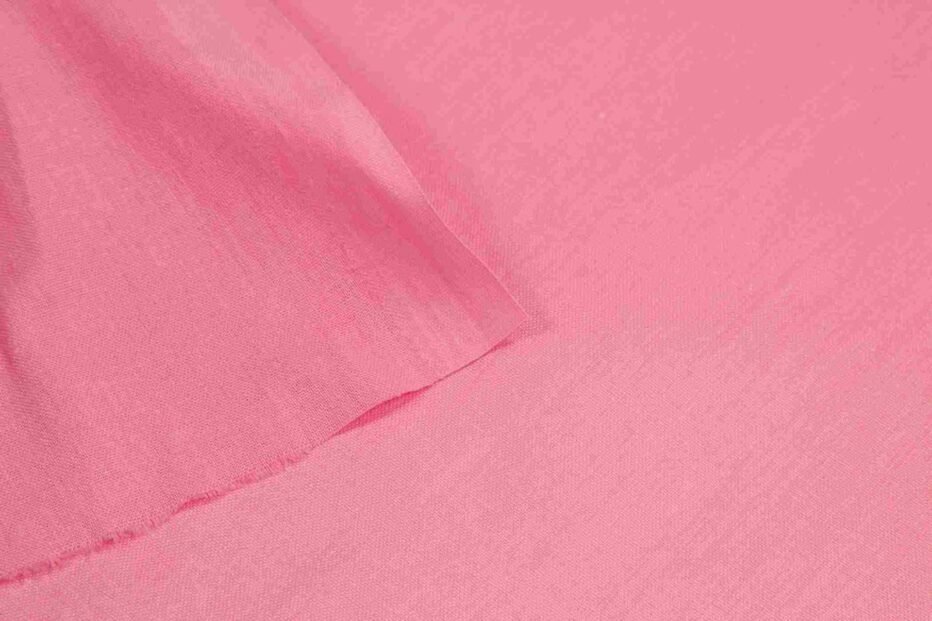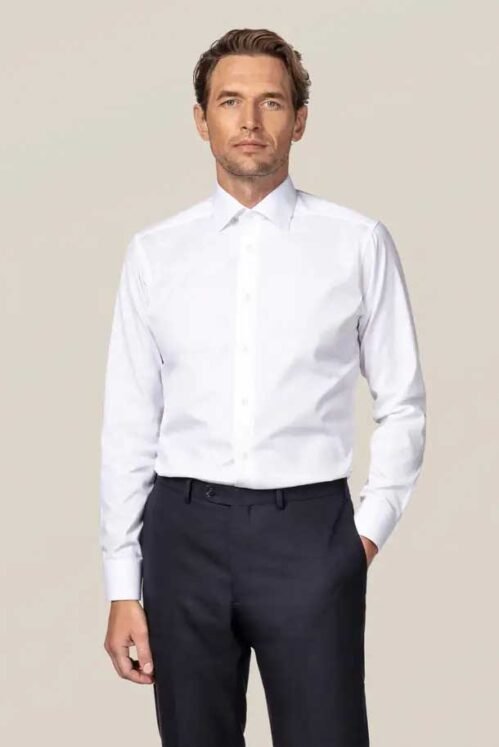If you’ve ever asked yourself about the meaning of ‘what is poplin fabric‘ then you’re in the right place. You’ve probably, most definitely, worn some variation of poplin, whether it’s 100% cotton poplin or a cotton-poly blend. Whilst traditionally it was primarily used for commonplace attire, it now has a place both in your everyday wardrobe and haute couture fashion.
Common Applications
Dresses, Shirts, Trousers, Sportswear, Pajamas, Seatcover

Description
A tightly woven, finely ribbed broadcloth-like fabric often used for shirting
If you’ve ever asked yourself about the meaning of ‘what is poplin fabric‘ then you’re in the right place. You’ve probably, most definitely, worn some variation of poplin, whether it’s 100% cotton poplin or a cotton-poly blend. Whilst traditionally it was primarily used for commonplace attire, it now has a place both in your everyday wardrobe and haute couture fashion. Its popularity is hardly surprising, favoured for its strong, durable nature but soft, lustrous surface. It’s basically a solid, all-rounder fabric that can’t really do any wrong.
Background
Story
During the 15th century, the word poplin was derived from the fabric papelino which was created at Avignon, France. The name was taken from the Papal residence from where it was initially produced. Poplin became famous in the 20th century when it was used to make winter outfits.
In World War II, Military personnel of Britain, as well as the U.S., used poplin as their main fabric to make their uniforms. It helped soldiers to stay cool when needed, however, it was durable to endure harsh elements.
Manufacturing
Poplin fabric is characterised by its distinctive ribbed texture and tightly closed weave. This gives the fabric the lustre that we all love. Traditionally poplin was a plain weave constructed using fine silk warp yarns, filled in with a heavier wool yarn. This is how it gets the classic ribbed texture.
Today, poplin fabric is primarily made from 100% real cotton, making it lightweight but still retaining the strength. Other variations include wool, silk, satin, rayon or a polyblend fabric, but the basic concept remains the same; 2 yarns of different thicknesses in a plain weave. If you like having the best of both worlds, poplin is thin and cool with an easy drape, yet simultaneously sturdy and tough.

Expertises
Characteristic
- Durable and strong
- Cool, lightweight
- Versatile
- Soft to touch
- Lustrous face
- Subtle sheen
- Comfortable
- Delight to print on
- Doesn’t wrinkle easy
- Doesn’t stain easy
- Water resistant
The Origins of Poplin Fabric
Poplin has always been incredibly popular. This is not surprising given that it’s soft to touch, durable and has a smooth, lustrous surface. Back in the 15th Century, poplin was used for winter attire, and was made using silk and wool. The actual word ‘poplin’ derives from ‘papelaine’, and is based on the (now obsolete) French papal town of Avignon.
The fabric was extremely commonplace, and wasn’t deemed luxurious despite being woven with real silk. In Louisa May’s novel ‘Little Women’, two sisters were described as being full of regret for attending a ball in their best poplin dresses, instead of pure silk.
What Is Poplin Fabric Used For?
Poplin is an extremely versatile fabric and can be used for a range of different items. From apparel to home décor, this adaptable fabric can be found everywhere.
The most common use is clothing. It’s an ideal fabric for shirts, dresses, sportswear, and even trench coats—particularly summer weight apparel. Poly-cotton poplin is incredibly popular as a material for uniforms. The weave of the poplin combined with both cotton and polyester properties makes garments easy to care for, durable, and long-lasting. This is why it’s the fabric of choice when it comes to comfort and wearability.
Broadcloth vs Poplin: What Is the Difference?
Broadcloth has a more robust, sturdy texture than poplin because it is woven with thicker warp and weft threads. Unlike poplin, both the warp and weft threads are usually the same fiber content and therefore, the same size throughout. The fabric is a medium-weight, tightly woven material with a crisp feel that is prone to wrinkling. It’s a slightly heavier fabric than poplin making it ideal for cooler climates.
Poplin is a lightweight fabric that combines fine warp threads with thicker weft yarns. Poplin threads can be a mixture of fibers, cotton and polyester is a popular combination. The result is a soft, strong fabric ideal for summer garments. Its lightness gives both drape and a slightly translucent finish to clothing. Poplin, in contrast to broadcloth, is both easy to iron and resistant to wrinkles.
Social
12k followers
30k likes
Youtube
22k subscribers
8k followers
Have a project in mind?
If you have a great idea, reach out to me. Whether it is a small or big project, I will listen first and get back to you with a plan.

